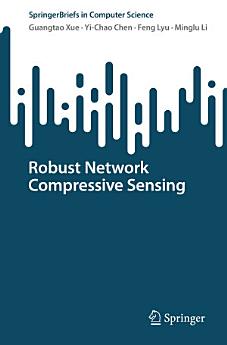關於本電子書
The networks are constantly generating a wealth of rich and diverse information. This information creates exciting opportunities for network analysis and provides insight into the complex interactions between network entities. However, network analysis often faces the problems of (1) under-constrained, where there is too little data due to feasibility and cost issues in collecting data, or (2) over-constrained, where there is too much data, so the analysis becomes unscalable. Compressive sensing is an effective technique to solve both problems. It utilizes the underlying data structure for analysis. Specifically, to solve the under-constrained problem, compressive sensing technologies can be applied to reconstruct the missing elements or predict the future data. Also, to solve the over-constraint problem, compressive sensing technologies can be applied to identify significant elements
To support compressive sensing in network data analysis, a robust and general framework is needed to support diverse applications. Yet this can be challenging for real-world data where noise, anomalies and lack of synchronization are common. First, the number of unknowns for network analysis can be much larger than the number of measurements. For example, traffic engineering requires knowing the complete traffic matrix between all source and destination pairs, in order to properly configure traffic and avoid congestion. However, measuring the flow between all source and destination pairs is very expensive or even infeasible. Reconstructing data from a small number of measurements is an underconstrained problem. In addition, real-world data is complex and heterogeneous, and often violate the low-level assumptions required by existing compressive sensing techniques. These violations significantly reduce the applicability and effectiveness of existing compressive sensing methods. Third, synchronization of network data reduces the data ranks and increases spatial locality. However, periodic time series exhibit not only misalignment but also different frequencies, which makes it difficult to synchronize data in the time and frequency domains.
關於作者
Feng Lyu (IEEE S'16-M'18) received the Ph.D. degree from the Department of Computer Science and Engineering, Shanghai Jiao Tong University, Shanghai, China, in 2018 and the B.S. degree in software engineering from Central South University, Changsha, China, in 2013. From September 2018 to December 2019 and from October 2016 to October 2017, he was a Postdoctoral Fellow and a Visiting Ph.D. Student with BBCR Group, Department of Electrical and Computer Engineering, University of Waterloo, Waterloo, ON, Canada. He is currently a Professor with the School of Computer Science and Engineering, Central South University, Changsha, China. His research interests include vehicular networks, beyond 5G networks, big data measurement and application design, and could or edge computing.
Minglu Li (IEEE M'08-SM'19) received the Ph.D. degree from Shanghai Jiao Tong University, China, in 1996. He is currently a Distinguished Professor with the College of Mathematics and Computer Science, Zhejiang Normal University, China, and a Professor with the Department of Computer Science and Engineering, Shanghai Jiao Tong University. His main research topics include cloud computing, image processing, and e-commerce.




